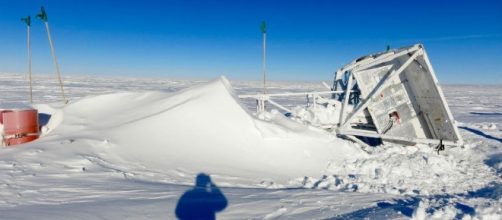NASA scientists have recovered a balloon a year after it was sent to Antarctica on a scientific mission according to a news report published on Space.com dated February 26, 2017. The balloon contained a football sized capsule containing a telescope for studying solar flares. The balloon was launched on January 19, 2016, from the American Antarctic research base McMurdo Station. NASA has the following explanation for the year-long delay in recovering the data from the balloon.
The telescope stayed safely cocooned in the capsule and scientists had to wait for one year since the harsh Antarctica winter was approaching and the recovery operation could not be made.
However, despite the extreme vagaries of nature, the telescope remained in prime health and can be used again.
Part of the GRIPS mission
The balloon was a part of a NASA-funded GRIPS (Genesis and Rapid Intensification Processes) experiment is a NASA Earth mission and contained a cryostat instrument and was floated 39 kilometers above the icy continent for 12 days in January 2016 followed by a command to cut the balloon. It is now that scientists have recovered the football sized capsule with the telescope hanging below it, almost a year after the flight.
The balloon filled with helium gas is the size of a football pitch, and it floated over the icy expanse observing the sun for 12 days before it was separated from the balloon and settled in the cold region.
The balloon traveled about 500 miles and fell in the center of the icy continent. It did not remain aerial for 14 to 55 days as envisaged and fell much earlier. However, it took a full year for NASA to retrieve the telescope and transported it back to Amundsen-Scott Pole station.
Mission to study effects of solar flares
The mission envisaged taking a detailed measurement of high-energy particles released during episodes of solar flares.
It was a part of GRIPS project. The high energy particles can have a debilitating effect on the satellites orbiting the Earth. The GRIPS project measures X-rays and gamma rays from solar flares, its periodicity, and composition.

